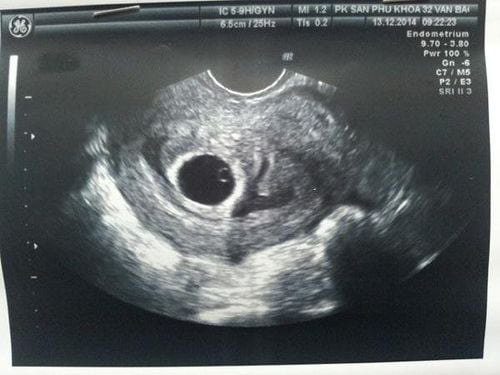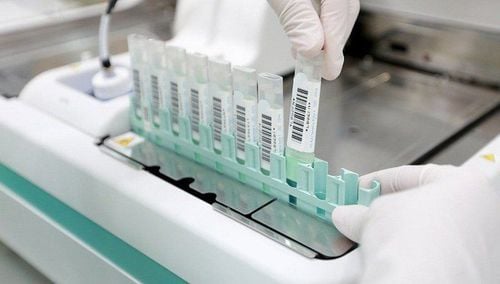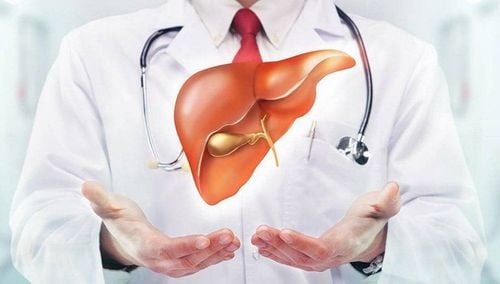This is an automatically translated article.
The article was written by Specialist Doctor I Nguyen Phi Tung - Emergency Resuscitation Department, Vinmec Central Park International General Hospital.
Blood gas is an extremely important test in the field of emergency resuscitation, blood will be analyzed to evaluate respiratory status, metabolic status, and other parameters (such as sodium, potassium, calcium, blood lactate).
For accurate analysis, we need to draw blood from the artery. However, sometimes arterial blood collection is difficult because arterial blood collection is more difficult than venous blood collection, more painful, and bleeding is more frequent. Therefore, in certain situations, the physician may only need to draw blood from a peripheral vein for blood gas analysis depending on the purpose. Venous blood gas is rough. m peripheral and central veins. This article will learn about arterial blood gases and peripheral venous blood gases.
1. Parameters to be evaluated when analyzing arterial blood gas results
When analyzing arterial blood gas results, the following parameters should be evaluated:
Blood oxygen (respiration) pH and blood pCO2 (respiration and metabolism) Blood lactate: Diagnosis of septic shock, kinetic monitoring lactate (resuscitation efficiency), poisoning diagnosis... HCO3: not a direct parameter - an indirect measure (indirect calculation from the Henderson-Hasselbalch formula)
2. Difference between arterial and venous blood
Regarding blood oxygen: Much different and fluctuating (depending on the pathology, tissue oxygen use..) Regarding pCO2 and pH: Difference from arterial blood +pH lower than arterial blood pH: Peripheral (0.02-0.04); Center (0.03-0.05)
+pCO2 higher than arterial blood pCO2: Peripheral (3-8mmHg), central (4-5mmHg)
Blood lactate: Arterial lactate is considered the “gold standard” because the blood is active The pulse represents the total amount of lactate produced by the body. Venous blood lactate tends to be higher than arterial blood.
However, studies have found that: (1) venous and arterial blood lactate correlate well (correlation coefficient R = 0.94); (2) Venous blood lactate is not much higher than arterial blood: 0.18-0.22mmol/l
3. Analyze and choose between venous and arterial blood gases
About Blood Oxygen:
Venous blood gas has no meaning
It can be said that blood oxygen can be monitored with SpO2 – a continuous and non-invasive monitoring tool, however:
SpO2 can only be shown when oxygen deficiency (SpO2 < 90%, usually PaO2 < 60 mmHg) but does not show exactly how much oxygen is. And whether it is more than the need or not (SpO2 94-100%, PaO2 can be from 80-500mmHg, it may be enough, it may be too much) There are cases where SpO2 cannot monitor the oxygen status of the blood (poisoning). CO) Therefore, there are cases that need to do arterial blood gas to evaluate blood oxygen, there are cases when it is not necessary.
Regarding blood pH and CO2:
Difference between pH and pCO2 in venous and arterial blood is there, but not much (especially in pH)
Some examples to assess CO2: Level of respiratory acidosis? Causes of perceptual disturbances? Causes of cardiac arrest?
3-8 mmHg difference is not clinically significant, it is acceptable to temporarily accept venous blood CO2 results (However, 3-8 mmHg difference in CO2 will be significant in case of acute respiratory acidosis – suggested when pH changes much)
About blood lactate:
Blood lactate > 2 mmol/l is one of the criteria for septic shock.
Intravenous blood lactate tends to be higher (0.18-0.22mmol/l) but not clinically significant
Venous blood lactate correlates well with arterial blood (correlation coefficient R = 0.94)
Hence:
If you are doing research and need a very accurate blood lactate value then you need to use arterial blood gas, in other cases it may be necessary to use only venous blood gas when arterial blood gas is not available (eg not yet available). arterial catheters). If you need to monitor lactate kinetics then venous blood is fine (Current trends show that capillary blood also correlates well, so one can monitor lactate kinetics with capillary blood – POC at bed) Hospital Vinmec International General Hospital is one of the hospitals that not only ensures professional quality with a team of leading medical doctors, a system of modern equipment and technology, but also stands out for its examination, consultation and treatment services. comprehensive, professional disease; civilized, polite, safe and sterile medical examination and treatment space.
Please dial HOTLINE for more information or register for an appointment HERE. Download MyVinmec app to make appointments faster and to manage your bookings easily.
References:
1-Byrne AL, Bennett M, Chatterji R, Symons R, Pace NL, Thomas PS. Peripheral venous and arterial blood gas analysis in adults: are they comparable? A systematic review and meta-analysis. Respirology. 2014 Feb;19(2):168-175. doi: 10.1111/resp.12225. Epub 2014 Jan 3. PMID: 24383789.
2-Zeserson E, Goodgame B, Hess JD, Schultz K, Hoon C, Lamb K, Maheshwari V, Johnson S, Papas M, Reed J, Breyer M. Correlation of Venous Blood Gas and Pulse Oximetry With Arterial Blood Gas in the Undifferentiated Critically Ill Patient. J Intensive Care Med. 2018 Mar;33(3):176-181. doi: 10.1177/0885066616652597. Epub 2016 Jun 9. PMID: 27283009; PMCID: PMC5885755.
3-Kruse O., Grunnet N., Barfod C. (2011), "Blood lactate as a predictor for in-hospital mortality in patients admitted acutely to hospital: a systematic review", Scand J Trauma Resusc Emerg Med, 19, 74.













